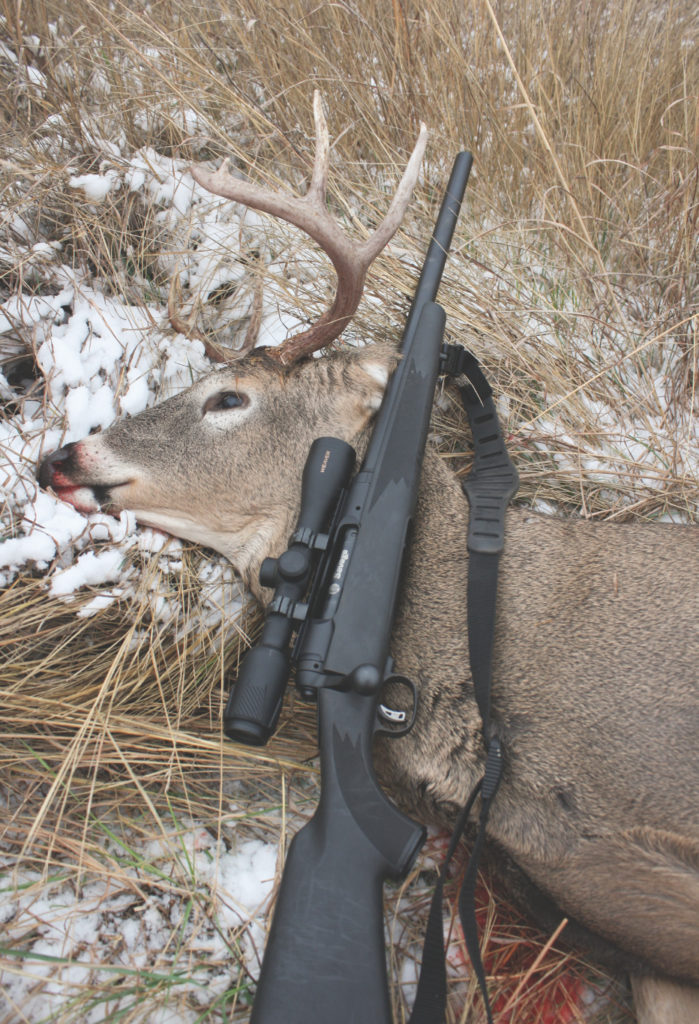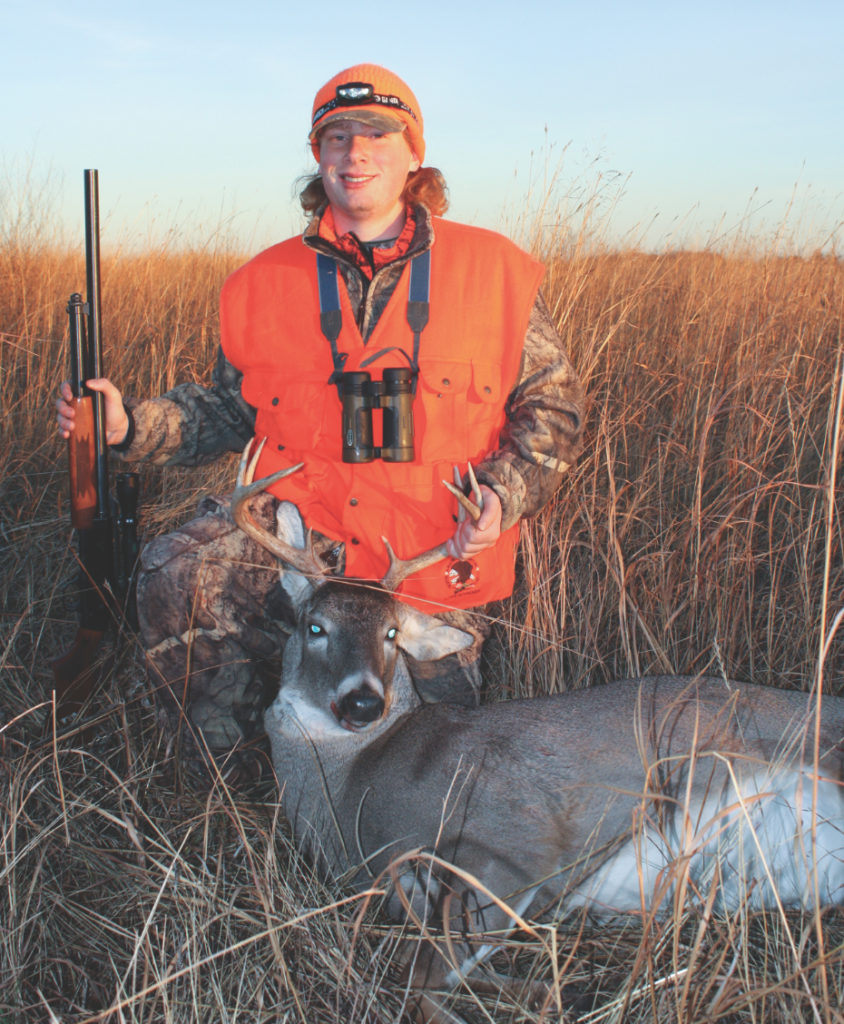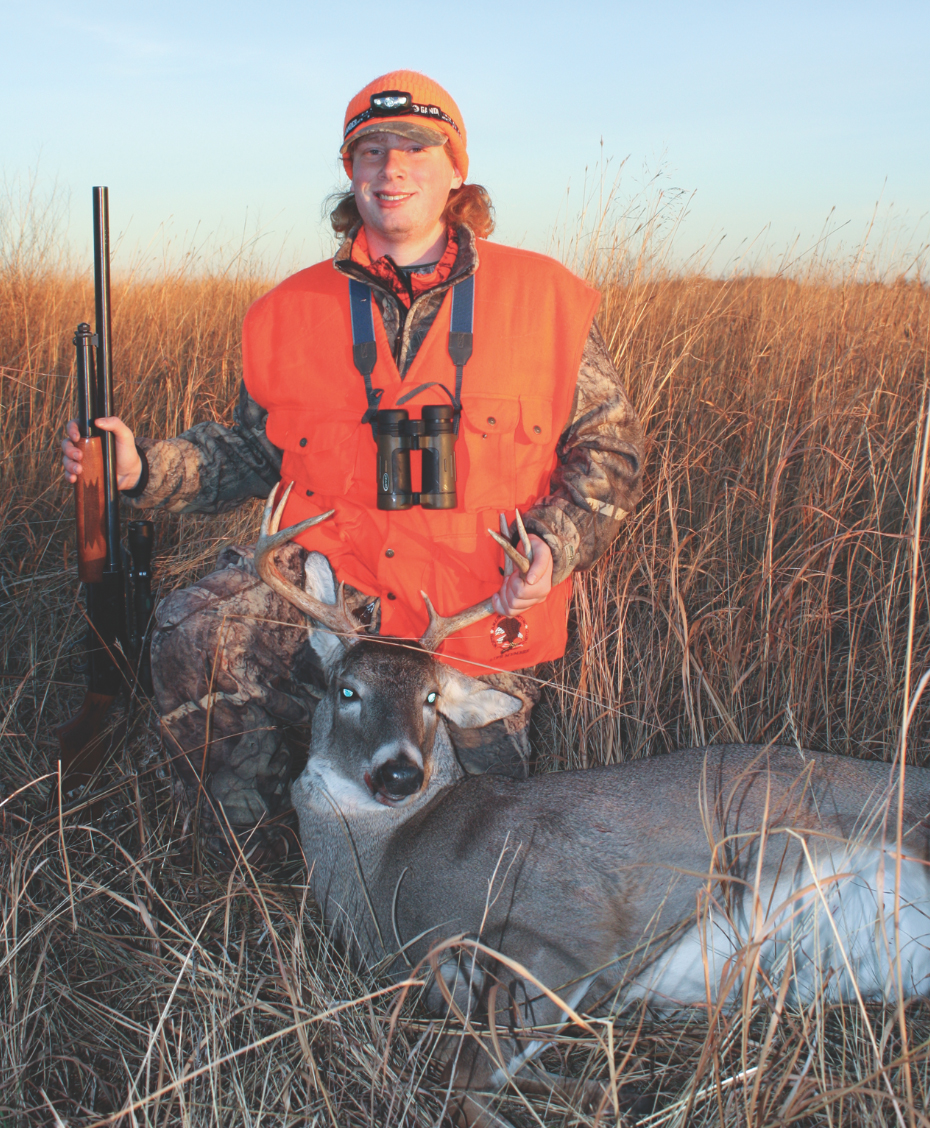Long gone are the days when hunting with a shotgun stuffed with crudely rifled slugs reduced deer hunting to a poke and a hope.
I turned 12 years old a mere 11 days before Wisconsin’s 1974 gun deer season, my first. With a fresh hunter’s safety certificate in my wallet, a new orange zip-front sweatshirt coat in the old metal-sided basement wardrobe that held our family’s hunting clothes, and a weathered but functional hand-me-down hammerlock Winchester 12 gauge shotgun in the glass-fronted gun cabinet in our family room around the corner, I was on top of the world.
Except for one little problem: I wasn’t 100% reliable with the old shotgun’s hammer, and Dad wasn’t going to let me hunt until I was.
I don’t know how many hours I worked that hammer to be able to click it back solidly and then let it down as soft as a wisp of cattail lint on an autumn breeze, but I must have mastered the process and passed the test, because the evening before opening day Dad unlocked the ammunition case and let all three of his boys, of which I was the youngest, choose their loads.
Dad was ever budget-minded on all things, and our rifled slug collection contained a motley array of five-load boxes acquired on sale every year at various sporting goods, farm and hardware stores around Monroe, across Green and Lafayette counties, or on the occasional trip up to Madison.
Oh, we shot a lot of slugs at deer in those days. Everybody did. But we always seemed to accumulate more shells than we used. Bright green-and-yellow Remington boxes, with green-cased shells inside. Classic gray-and black Federal boxes, with purple shells. And Winchester boxes with that lightning-bolt and horse logo, and bright red shells.
I glommed onto the Winchesters, liking the red color and thinking they might shoot better in my gun of the same brand name. Speaking of which, the firearm had already accounted for one whitetail, our family’s very first, a few years before — a young buck shot by my oldest brother, Chuck, on a cold and blue-skied morning. But Chuck had graduated to a Western Field pump gun out of the Montgomery Ward catalog.
There wasn’t much practice. Actually, there wasn’t any. “Just point it and shoot,” were the instructions I received. Afternoons of rabbit and pheasant hunting — priorities in my family — were not given up to shoot up slugs in preparation for what was then a three-day, either-sex deer season.
Initiation to Slug-Gun Hunting
That first season, a couple of does shuffled and thumped past me in crunchy oak leaves on hard-frozen ground, and I shot one pausing deer smack-dab in the ear. I still feel bad about that. By the time I could snap open the action and reload, she had shaken her head and stomped off.

The next year, I carried an Ithaca Model 37, bought with cash saved up from helping local farmers put up summer hay, and the season after that I dropped my first whitetail — a fat doe that came trotting across an abandoned pasture at dawn. I still remember her breath in the frosty air, how the single bead pretty much covered up her chest; how she jumped at the shot; finding some hair; and then following the meager blood trail 50 yards to find her piled up in the neighboring alfalfa field.
By that time we were serious enough about deer hunting that we visited a local gravel pit for an hour before the season to at least see where our guns were shooting. The joke was, if you didn’t hit the box used as a target, you’d better get a bigger box.
That’s when I biked up to the local gunsmith and had the Ithaca drilled and tapped for an open rear notch sight, and a ramp blade on the front of the barrel. Still using old-fashioned rifled slugs, I shot my first buck — a sleek 7-pointer that stepped out of the timber on a snowy morning — in 1979.
That pieced-together smoothbore Ithaca served me well for more than a decade. In 1986, I shot a 6-point buck at 90 yards with it. My first shot kicked up dirt at the buck’s feet, so I aimed a corresponding amount high. That was one extremely unlucky buck.
The Evolution of the Slug Gun
Then the evolution of the slug gun started gaining steam. When I worked for a year at a gun store, I bought a used Mossberg 500 for $85, and then “sent away” via mail-order a couple of years later to Mossberg for a $100 rifled slug barrel complete with rudimentary open sights. I spent five or six years shooting that setup until adding a scope seemed like a good idea for increasing accuracy.
To start, I used a bracket that attached to the receiver, to hold the scope. While this was a serviceable arrangement, and accuracy was better than with open sights, a new cantilevered barrel replaced the original barrel a decade or so later, along with a decent low-power scope.
I still have that basic setup as a backup slug gun to this day, or as a gun for guests. I updated the scope again a few years ago for a third time, to a nice short-tubed and bright-glassed Weaver. Shooting today’s sabot slugs, the pump gun is a deadly 80-yard gun, and it could do the job at 100 yards at a standing deer in open country.
Occasionally though, there were brief visits back to the old days. For instance, when the 500 was still my main gun, my backup was one of my bird guns — a little short-barreled, straight-English-stocked Remington 870. I called it to duty one frigid-cold November afternoon after the Mossberg failed to fire on a whitetail trotting past in a cut cornfield.
I marched up the ridge to my vehicle, grabbed the 870 (fitted with a rifled choke tube) and a box of those old slugs, and rolled a doe coming through full steam an hour later at maybe 20 yards. She seemed to be running about the speed of a flying rooster pheasant, and I shot as such.
Sabots — The Game Changer
In my estimation, saboted slugs became the game changer for shotgun hunters. Both range and accuracy expanded geometrically with sabots shot through fully rifled barrels. The game changed again with some of the bolt-action slug guns out there. I made a Savage 212 mine a half-dozen or so years ago now.

It’s easily and legitimately a 100-yard gun, and that’s conservative. I’d hesitate to prognosticate on an outside range for such a scoped gun, but it’s a good deal more than that football field’s worth of distance. This past season, I hit a Minnesota prairie buck low in the chest at 80 yards. The deer ran 50 more yards out into a cut cornfield and stopped. I could have waited for the deer to drop, but why take a chance? I shot the buck through the neck at the extended range, something that never would have happened with a smooth barrel, open sights and old-time slugs.
The New Tradition
These days, with liberalized rules on the firearm you can use in Wisconsin’s hilly and deer-rich driftless country, my three 20-something sons can use centerfire rifles in those same old slug-hunting stomping grounds where I started deer hunting and they are getting the opportunity to partake in what’s for them a new tradition.
You don’t hear as many shots as you used to during the gun deer season there. I suspect that’s a function of three factors: more accurate rifles (fewer shots needed); different hunting strategies (stand hunting rules, and the deer drive has virtually disappeared); and fewer people in the woods (though I have no empirical data, the crossbow seems to be taking some hunters out of the woods for firearms season).
Still, I have only two rifles, so one boy uses the 212 slug gun, which is by no means a handicap in that country. I usually carry the old Mossberg, but haven’t been getting much of a chance to shoot it, spending more time guiding, field-dressing, skinning and quartering the harvest.
It’s been good to be in those native hills of mine with my own progeny in tow. The boys love hearing stories of the old-time slug-hunting days. But something was missing, and it was hard to figure out what. Then, this past fall, while packing for a different hunt, I came across the 2-foot-high stack of those old slug boxes on one of my ammunition shelves. The assortment had ended up with me after my father passed away a few years ago.
So I threw a couple boxes in my shell bag for a pheasant hunt, and during a break took a few shots at an old box for fun. My little smoothbore Benelli Ultra Light threw those old slugs pretty good out to 50 yards.
I didn’t shoot a deer in the native hills this year, concentrating instead on the aforementioned guide services and deer-processing chores. But driving home to Minnesota for Thanksgiving after the hunt, the boys said they wanted to do more of the work and have me shoot a deer next year (this fall). I agreed, and we started laying some plans — with almost a full year to go before the next opening day. Such are the hearts of deer hunters.
It’s not the old single shot, but carrying a little Benelli bird gun I love, and loading up with some old rifled slugs that are 20 to 40-plus years old but that still go boom, is bringing me full-circle on my slug hunter’s journey and got me excited for the hunt. And I know the exact spot I’m going to set up. You can see just about 50 yards from there.
— Tom Carpenter is an avid bowhunter, gun-hunter and camp chef from Minnesota.


